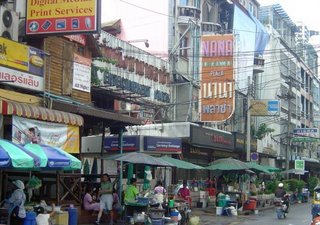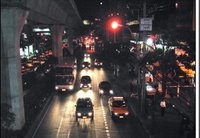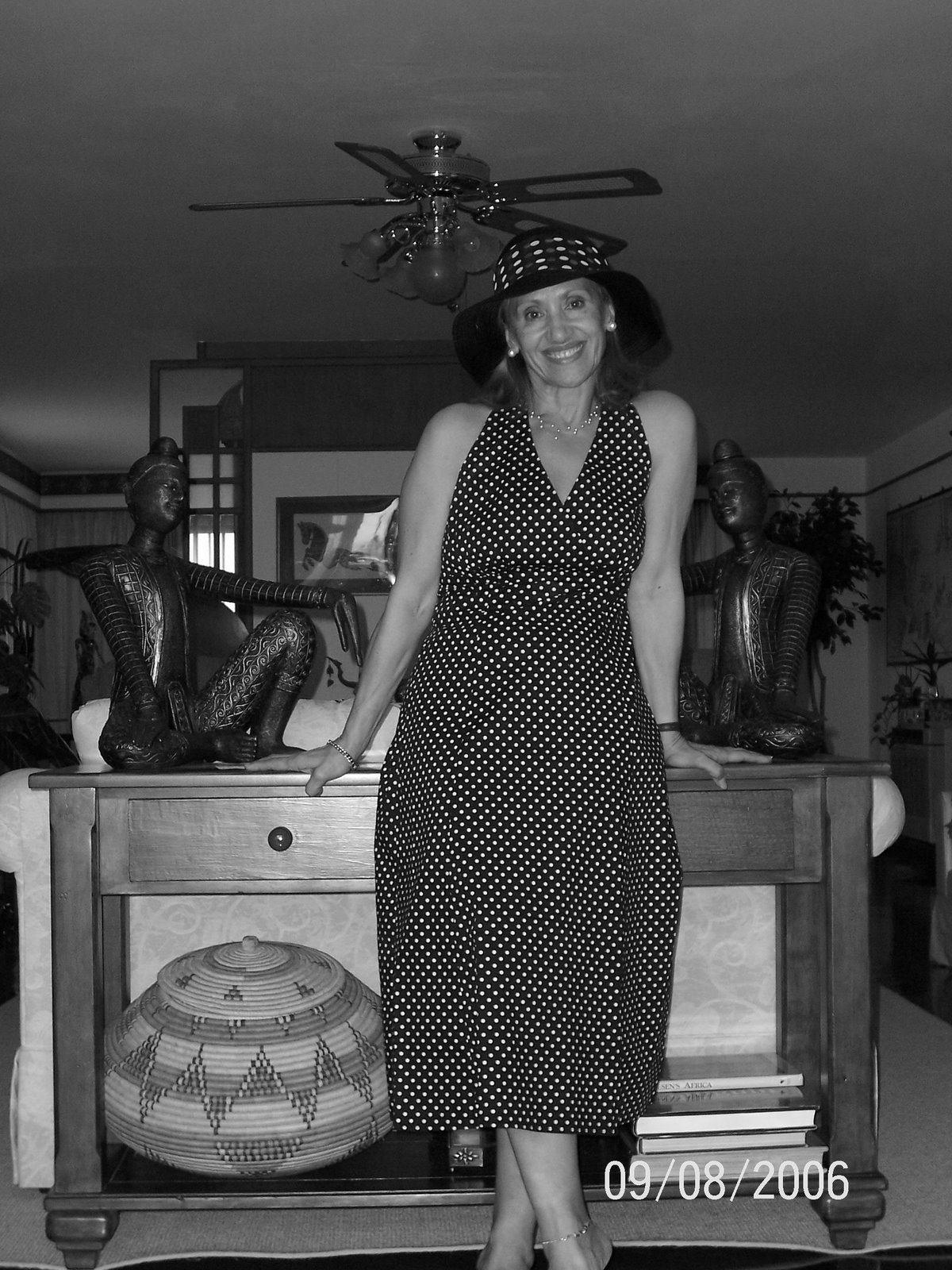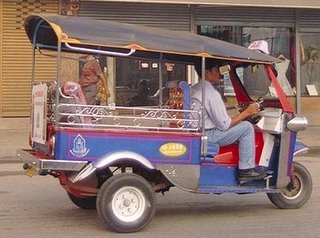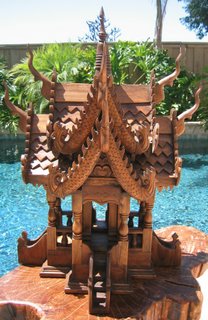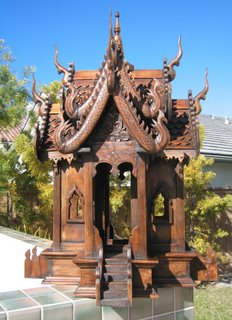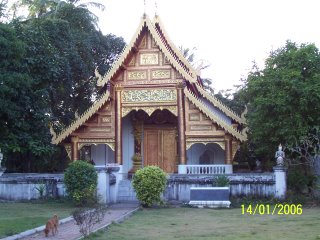 In countless ethnic societies around the globe, the pleasures derived from food -- its taste, smell and visual presentation -- parallel the satisfactions of a happy, well-lived life. Happiness is food and vice versa. Thais are no exception to this rule; they are proud and passionate about their world renowned cuisine and with good reason.
Thailand’s culinary delights combine the great influences of the diverse ethnic groups that inhabit its territory. China has had the greatest impact on Thai gastronomy as culturally and historically, the Chinese make-up the most important ethnic group in the country.
Chinese eateries and traditions abound in Bangkok and other large cities, and for many centuries, itinerant Chinese merchants came and went between China and the land of Siam. Some of them intermarried choosing to settle along the banks of rivers from where their business was conducted. Chinese legacies exist all over the country and the rest of Southeast Asia, for that matter, as significant trade from the 11th century onwards brought lands together in economic, cultural and political pacts.
At the first October full moon this year, the Chinese in these parts will celebrate the Moon Festival, a tradition brought along by those long-ago merchants. The fest’s star is the moon cake, a Chinese custom that’s alive and kicking in the streets of Bangkok.
In countless ethnic societies around the globe, the pleasures derived from food -- its taste, smell and visual presentation -- parallel the satisfactions of a happy, well-lived life. Happiness is food and vice versa. Thais are no exception to this rule; they are proud and passionate about their world renowned cuisine and with good reason.
Thailand’s culinary delights combine the great influences of the diverse ethnic groups that inhabit its territory. China has had the greatest impact on Thai gastronomy as culturally and historically, the Chinese make-up the most important ethnic group in the country.
Chinese eateries and traditions abound in Bangkok and other large cities, and for many centuries, itinerant Chinese merchants came and went between China and the land of Siam. Some of them intermarried choosing to settle along the banks of rivers from where their business was conducted. Chinese legacies exist all over the country and the rest of Southeast Asia, for that matter, as significant trade from the 11th century onwards brought lands together in economic, cultural and political pacts.
At the first October full moon this year, the Chinese in these parts will celebrate the Moon Festival, a tradition brought along by those long-ago merchants. The fest’s star is the moon cake, a Chinese custom that’s alive and kicking in the streets of Bangkok.
Chinese Mooncakes and Legends
Usually baked, consisting of a thin tender skin enveloping a sweet and slightly oily filling, mooncakes used to exclusively be enjoyed throughout the Mid-Autumn Moon Festivities. Today, however, they s eem to be a part of Chinese confections, year round.
While mostly loved by children, mooncakes are also favored by grown-ups in the late afternoon with several cups with jasmine green tea. Moon cakes are intended to be shared with friends and family in honor of the moon festival and should never be eaten alone.
Plentiful in the autumn months, the time for moon cake sampling has already begun in Bangkok. This year’s Moon Cake Festival ends October 6 which is the 15th day of the eighth moon in the Chinese calendar.
In Asia as well as in other parts of the world, the moon, sun and stars have been the foundation of many a fable and myth.
eem to be a part of Chinese confections, year round.
While mostly loved by children, mooncakes are also favored by grown-ups in the late afternoon with several cups with jasmine green tea. Moon cakes are intended to be shared with friends and family in honor of the moon festival and should never be eaten alone.
Plentiful in the autumn months, the time for moon cake sampling has already begun in Bangkok. This year’s Moon Cake Festival ends October 6 which is the 15th day of the eighth moon in the Chinese calendar.
In Asia as well as in other parts of the world, the moon, sun and stars have been the foundation of many a fable and myth.
Akin to many agricultural societies, the Chinese regulated their sowing and harvesting by the phases of the moon. Once the harvest season came to its end, festivities to commemorate and revere its fullness and influence over people’s lives became a symbol of harmony and luck celebrated with special foods and colorful lanterns.
One myth tells the story of a time during the Yuan Dynasty when China was ruled by the Mongolian people. Leaders from the preceding Sung dynasty were unhappy at submitting to foreign rule, and tackled the coordination of a rebellion without it being discovered.
The leaders of the rebellion, knowing that the Moon Festival was drawing near, ordered the making of special cakes. A message was baked into each moon cake with an outline of the ambush. On the night of the Moon Festival, the rebels successfully attacked and overthrew the government, thus instituting the Ming Dynasty, distinguished  for the establishment of a strong army and navy; the printing of books; the construction of the Great Wall and exquisite porcelains. Nowadays, moon cakes honor this legendary Ming Dynasty story.
for the establishment of a strong army and navy; the printing of books; the construction of the Great Wall and exquisite porcelains. Nowadays, moon cakes honor this legendary Ming Dynasty story.
To honor the Harvest Moon, cakes shaped like moons are sold in Bangkok and other communities with large Chinese populations throughout Southeast Asia. Celebrating the Festival, families gather in buildings, hike up hills, or camp in open beaches and fields to gaze at the wondrous, rising deep yello w moon believing their wishes will be granted. They also carry candlelit lanterns adorned with traditional designs prepared for the occasion. It is a wonderful sight as the hills, and open spaces alight with thousands of lanterns in the cool darkness of evening.
Today, lanterns come in colorful paper-shaped carp, butterflies, rabbits and goldfish. In Chinese mythology, carp represent health, power and wisdom; butterflies are a symbol of longevity and goldfish embody fortune and wealth.
w moon believing their wishes will be granted. They also carry candlelit lanterns adorned with traditional designs prepared for the occasion. It is a wonderful sight as the hills, and open spaces alight with thousands of lanterns in the cool darkness of evening.
Today, lanterns come in colorful paper-shaped carp, butterflies, rabbits and goldfish. In Chinese mythology, carp represent health, power and wisdom; butterflies are a symbol of longevity and goldfish embody fortune and wealth.
*************************************************************************************************
According to a traditional Chinese tale, a fine-looking girl named Chang E worked in the Jade Emperor's palace in the kingdom of heaven, a place where everyone lived among immortals. The kingdom was an idyllic place, and nonviolent. After accidentally breaking a porcelain jar, however, an angered Jade Emperor banished Chang E to Earth to live among mortals. Once there, she was transformed into a member of a poor farming family. Approaching her teenage years, her beauty flourishing, she abandoned her childish ways, embracing womanhood. Admiring her beauty from afar, a hunter discovered Chang E viewing herself in the reflection of a pond. The two soon became lovers. One day, ten suns were rising in the sky instead of one, casting scorching heat across the land. The hunter stepped forward and shot an arrow into the sky, through the nine extra suns sinking them into the oceans. Instantly becoming a hero and the source of great admiration, he soon married Chang E. The two lived happily, but eventually the hunter became a tyrant, ruling with a cruel and oppressive hand. He sought great power and ordered that an elixir of immortality be created in order to extend his life. Chang E came upon it and inadvertently consumed the elixir, infuriating her husband. Attempting to flee him, she jumped from the window of her palace bedroom, yet rather than falling, she somehow floated through the sky towards the glowing moon. Today the moon is revered by the Chinese and viewed at its fullest during the Autumn festival in order to make wishes and to catch a glimpse of the dazzling maiden residing within.
*************************************************************************************








